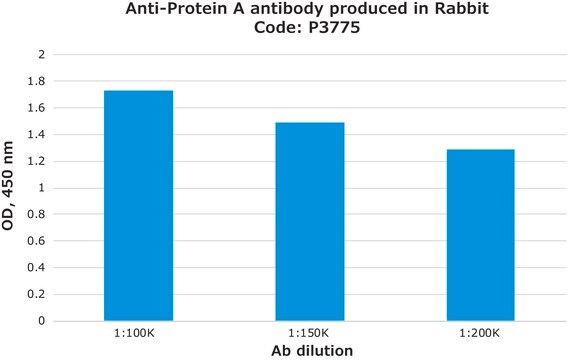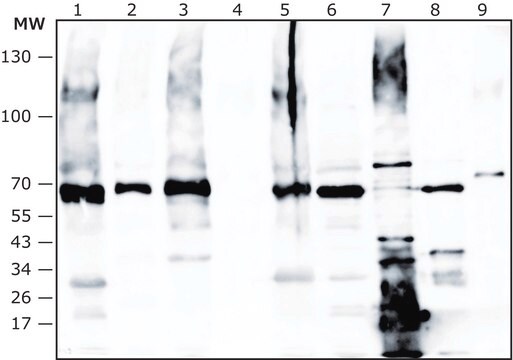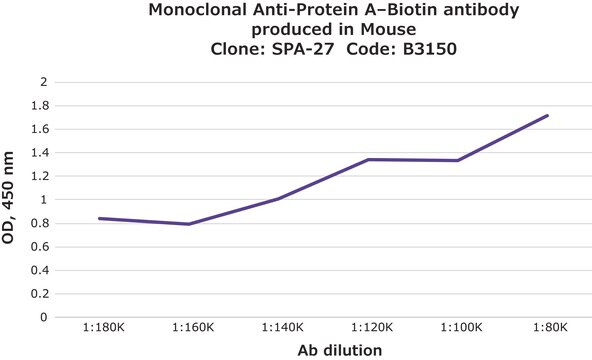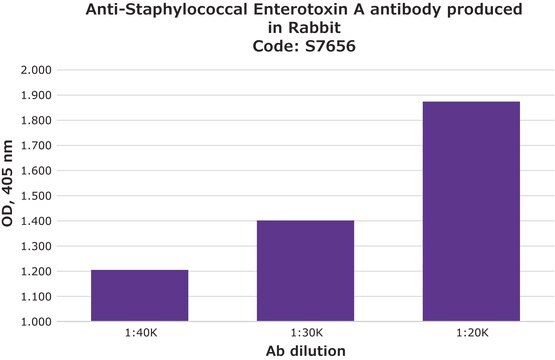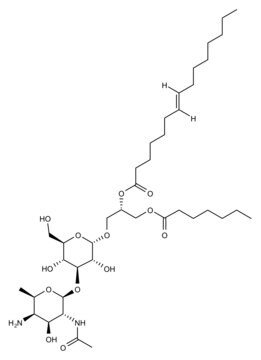SAB4200745
Anti-Protein A antibody, Mouse Monoclonal
clone SPA-27, purified from hybridoma cell culture
Sinônimo(s):
Anti-IgG binding protein A, Anti-SpA, Anti-Staphylococcal protein A, Anti-Staphylococcus ayreus protein A
About This Item
Produtos recomendados
fonte biológica
mouse
Nível de qualidade
forma do anticorpo
purified from hybridoma cell culture
tipo de produto de anticorpo
primary antibodies
clone
SPA-27, monoclonal
forma
buffered aqueous solution
peso molecular
~42 kDa
reatividade de espécies
Staphylococcus aureus
concentração
~1.0 mg/mL
técnica(s)
dot blot: suitable
flow cytometry: suitable
immunoblotting: suitable
immunofluorescence: suitable
immunoprecipitation (IP): 2.5-5 μg/test using purified protein A from Staphylococcus aureus
indirect ELISA: 0.25-0.5 μg/mL using 10 μg/mL of protein A from Staphylococcus aureus for coating. To reduce nonspecific binding we recommend on detection using a secondary anti-mouse, F(ab’)2 fragment antibody
Isotipo
IgG1
Condições de expedição
dry ice
temperatura de armazenamento
−20°C
modificação pós-traducional do alvo
unmodified
Descrição geral
Especificidade
Imunogênio
Aplicação
Ações bioquímicas/fisiológicas
forma física
Armazenamento e estabilidade
Exoneração de responsabilidade
Not finding the right product?
Try our Ferramenta de seleção de produtos.
Código de classe de armazenamento
12 - Non Combustible Liquids
Classe de risco de água (WGK)
WGK 1
Ponto de fulgor (°F)
Not applicable
Ponto de fulgor (°C)
Not applicable
Certificados de análise (COA)
Busque Certificados de análise (COA) digitando o Número do Lote do produto. Os números de lote e remessa podem ser encontrados no rótulo de um produto após a palavra “Lot” ou “Batch”.
Já possui este produto?
Encontre a documentação dos produtos que você adquiriu recentemente na biblioteca de documentos.
Os clientes também visualizaram
Nossa equipe de cientistas tem experiência em todas as áreas de pesquisa, incluindo Life Sciences, ciência de materiais, síntese química, cromatografia, química analítica e muitas outras.
Entre em contato com a assistência técnica
